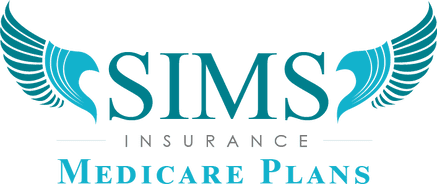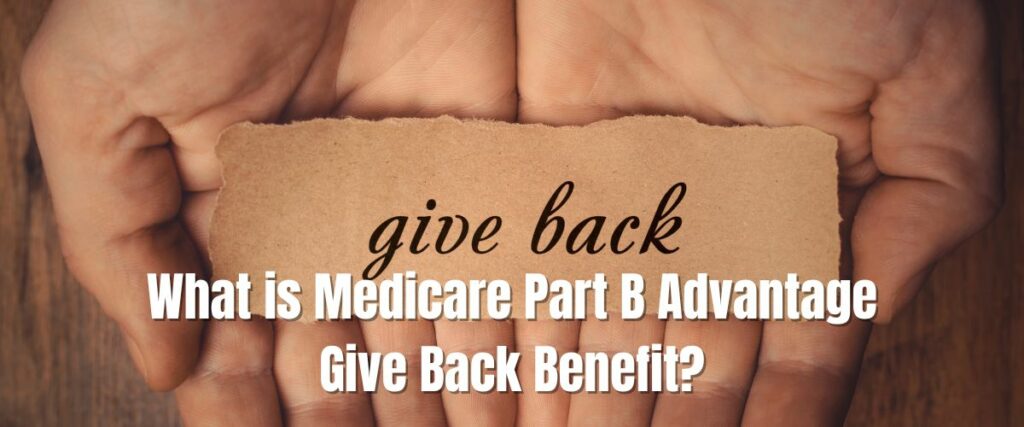The Medicare Advantage Give Back Benefit, also known as the Part B Premium Reduction Benefit, is an appealing but often misunderstood feature offered by some Medicare Advantage Plans. This article will explain what the Medicare Give Back Benefit is, how it works, eligibility requirements, and key factors to consider before enrolling in a plan with this benefit.
What is the Medicare Part B Give Back Benefit?
The Medicare Give Back Benefit, also referred to as a Part B premium reduction benefit or giveback, allows Medicare Advantage Plans to reimburse part or all of a member’s Medicare Part B premium on a monthly basis. Typically, the giveback amount ranges from $20 to $144 per month depending on the plan.
In Original Medicare, beneficiaries pay a standard monthly premium for Part B out of their own pocket. For 2023, the standard Part B premium amount is $164.90 per month.
With the Give Back Benefit, Medicare Advantage Plans can choose to cover some or all of a member’s Part B costs. This reimbursed amount is essentially given back to the member, reducing their out-of-pocket costs.
It’s important to understand this benefit is entirely separate from the Part B premium itself. Members still must pay their Part B premium to remain enrolled in Medicare. The Give Back Benefit reimburses part or all of that premium cost.
How Does the Medicare Give Back Benefit Work?
Here is an overview of how the Part B premium reduction benefit works:
- Member enrolls in a Medicare Advantage Plan that offers the Give Back Benefit
- The member continues paying their full Medicare Part B monthly premium
- The insurance company reimburses the member a set dollar amount each month
- Reimbursement is provided as a credit on the member’s Social Security check or by direct deposit
- Credit may take 1-2 months after enrollment to begin
For example, let’s say a member enrolls in a Medicare Advantage Plan with a $50 per month Give Back Benefit. That member would:
- Continue paying the full Part B premium of $164.90 per month
- Receive a $50 credit each month on their Social Security payment
- This lowers their out-of-pocket Part B cost to $114.90 per month
In this scenario, the member saves $50 per month or $600 per year on Part B costs due to the Give Back Benefit.
Eligibility for the Medicare Give Back Benefit
To be eligible for a plan’s Give Back Benefit, there are a few requirements:
- Must be enrolled in Original Medicare Parts A and B
- Must pay Medicare Part B premiums yourself (not covered by Medicaid)
- Must live in the service area of a Medicare Advantage Plan offering the Give Back Benefit
Additionally, since reimbursement is provided through Social Security, you must either:
- Receive a Social Security benefit payment each month
- Choose to have your reimbursement direct deposited if not receiving Social Security
If your Part B premium is paid by Medicaid or another third party, you will not be eligible for the Give Back Benefit. Only Medicare beneficiaries paying their own Part B premiums qualify.
Where is the Medicare Give Back Benefit Available?
The availability of plans offering a Part B premium reduction benefit depends entirely on your location. This benefit may only be available in certain states and counties.
In 2023, Give Back Benefit plans are available in these states:
- California
- Colorado
- Florida
- Illinois
- Kansas
- Maryland
- Michigan
- Missouri
- Nevada
- New Jersey
- New York
- Ohio
- Pennsylvania
- Texas
- Virginia
- Washington
However, even within these states, the benefit may only be offered in certain counties and metro areas. Availability can vary significantly from one ZIP code to the next.
You’ll need to check with plans in your exact location to see if any Medicare Advantage Plans in your area offer the Give Back Benefit. An independent broker can help identify plans available to you.
How Much is the Medicare Give Back Benefit?
The dollar amount reimbursed by plans offering this benefit can vary. Common Give Back Benefit amounts include:
- $20 per month
- $30 per month
- $50 per month
- $100 per month
- $144 per month (covers entire Part B premium)
The maximum giveback amount is currently $144 per month. No plans provide reimbursement above the standard Part B premium cost.
When evaluating plans, consider that higher giveback amounts mean bigger savings but may come with higher monthly premiums for the overall Medicare Advantage Plan.
Pros of the Medicare Give Back Benefit
There are advantages to enrolling in a Medicare Advantage Plan offering the Part B Premium Reduction Benefit:
Saves money – Members can save hundreds of dollars per year on out-of-pocket Medicare costs through the Give Back Benefit reimbursements.
Lower costs – The benefit effectively lowers your Part B premium expense each month. This provides significant costs savings for retirees.
Simple to use – Once enrolled, the credit is handled automatically each month. There is no extra paperwork or hoops to receive the benefit.
Appealing perk – The Give Back Benefit is a nice perk for Medicare Advantage members that makes the plan more desirable.
Increases savings – When paired with $0 premium plans, total savings and cost reductions can be significant for members.
For savvy Medicare beneficiaries, plans with the Give Back Benefit can create opportunities for real cost savings on Part B premium expenses.
Cons of the Medicare Give Back Benefit
However, there are also some potential drawbacks to weigh:
Limited availability – As mentioned, this benefit may not be available at all in your location. Even if offered, only certain plan types may include it.
Medicare Advantage trade-offs – To get the Give Back Benefit, you’ll need to enroll in a Medicare Advantage Plan which has pros and cons compared to Original Medicare coverage.
Network restrictions – Many Give Back Benefit plans are HMOs with provider networks. This limits flexibility in choosing doctors compared to Original Medicare.
Plan changes – The benefit is not guaranteed forever. The plan may discontinue or change the giveback amount from one year to the next.
May not be the best plan – The most suitable Medicare Advantage Plan for your needs may not coincide with the plan offering the highest Give Back Benefit amount.
Delays in reimbursement – It can take 1-2 months after enrollment for the credit to begin appearing in your Social Security payments.
While the reimbursements are beneficial, you don’t want to select or find a plan solely for the Give Back Benefit without considering other key factors.
What to Know Before Enrolling in a Give Back Benefit Plan
If you are considering joining a Medicare Advantage Plan with the Part B premium reduction feature, here are some important tips:
- Confirm availability – Verify that plans with the Give Back Benefit are accessible in your local area. Use the Plan Finder tool at Medicare.gov or speak to a broker.
- Compare carefully – Don’t just look at the giveback amount. Compare benefits, networks, premiums, Medicare savings, and costs of all plans available to you.
- Consider plan type – Give Back Benefit plans are often HMOs or PPOs. Know the implications of each plan type.
- Check changes annually – The benefit amount may change year to year even if offered by the same insurer.
- Look beyond the benefit – While attractive, the giveback shouldn’t be the only reason you select a plan. Make sure it meets your needs and budget.
- Aware of mid-year plan changes – In some cases, you may lose the benefit if you switch plans mid-year. Understand the risks before dropping a plan.
Working with an independent Medicare broker in your state can help you identify Give Back Benefit plans available and determine if enrolling makes sense for your situation.
Is the Medicare Give Back Benefit Right for You?
The Medicare Part B Premium Reduction Benefit offers the chance for meaningful cost savings that should not be overlooked. But ultimately you need to decide if enrollment in a Give Back Benefit plan aligns with your specific healthcare needs and coverage preferences.
Be sure to understand eligibility requirements in your local area, compare all Medicare Advantage Plan options carefully, and consider the pros and cons of changing your coverage situation. With smart planning, the Give Back Benefit can be an advantageous way to reduce your Medicare costs.
We’re Here to Help
You do not have to spend hours reading articles on the internet to get answers to your Medicare questions. Give Scott Sims at Sims Insurance Medicare Plans a Call at (541) 915-0939. You will get the answers you seek in a matter of minutes, with no pressure and no sales pitch. We are truly here to help.
FAQs
What is Medicare Part B Giveback?
Medicare Part B Giveback is a benefit that some Medicare Advantage Plans offer to help reduce or eliminate the monthly Part B premium that beneficiaries are required to pay. These Medicare Plans give back a portion of the premium, reducing the out-of-pocket cost for the beneficiary.
How does Medicare Part B Giveback work?
Medicare Part B Giveback works by reimbursing eligible beneficiaries for a portion of their Part B premium. The amount of the giveback can vary depending on the specific plan and the level of coverage offered.
What is the advantage of having a Medicare Advantage Plan with a give back?
The advantage of having a Medicare Advantage Plan with a give back is that it can help reduce the overall cost of healthcare for Medicare beneficiaries. By receiving a give back on the Part B premium, beneficiaries can have lower out-of-pocket expenses.
How can I find a Medicare Advantage Plan that offers a give back benefit?
To find a Medicare Advantage Plan that offers a give back benefit, you can use the online resources provided by Medicare or contact your insurance provider. They can help you compare different plans in your area and find one that offers this benefit.
Who is eligible for Medicare Part B Giveback?
Eligibility for Medicare Part B Giveback depends on the specific plan. Not all Medicare Advantage Plans offer this benefit, so it’s important to check with the plan provider to see if it is available.
Can I receive a Medicare give back if I have Medicare Part C?
Medicare Part C, also known as Medicare Advantage, can include a give back benefit. However, not all Medicare Advantage Plans offer this benefit, so you will need to check with the specific plan to see if it is included.
How can I compare Medicare Advantage Plans to find one with a give back benefit?
To compare Medicare Advantage Plans and find one that offers a give back benefit, you can use the online resources provided by Medicare or contact your insurance provider. They can help you compare different plans in your area and find one that offers this benefit.
What is the Medicare Part B Giveback benefit offered by Medicare?
The Medicare Part B Giveback benefit is not directly offered by Medicare. It is an additional benefit that certain Medicare Advantage Plans provide to help reduce or eliminate the monthly Part B premium.
Are the Medicare Part B premium reduction available in all areas?
The availability of Part B give-back benefits may vary depending on the insurance companies that offer Medicare Advantage Plans in your area. It is recommended to check with the plan providers to determine if this benefit is available in your location.
Which companies offer Medicare Advantage Plans with a Part B give-back benefit?
Many insurance companies offer Medicare Advantage Plans with a Part B give-back benefit. To find out which companies offer this benefit in your area, you can use the online resources provided by Medicare or contact your insurance provider.


